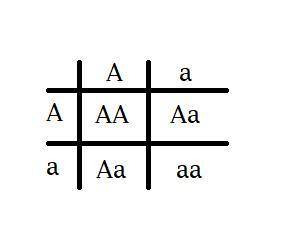
Biology, 17.07.2020 22:01 Chandler1Gaming
Cystic fibrosis (CF) is one of most common recessive disorders among Caucasians it affects 1 in 1,700 newborns. What is the expected frequency of carriers of the CF gene? What proportion of matings in the population could produce a child with CF? What is the expected incidence of CF among the offspring of two parents who are both carriers?

Answers: 2


Another question on Biology

Biology, 22.06.2019 01:30
Scenario 5 1) take 10 red and 10 black beans and place them, mixed, on the table. record the starting phenotype # and frequencies (% of your total population) of your starting population in the table provided (generation 0). 2) act as a predator. “capture” as many organisms as you can until you have reduced the population to three organisms. put them aside. at this point, the predators die. 3) the remaining organisms each produce 2 clonal offspring. multiply your organisms accordingly and allow them to mix on the table. calculate and record the resultant phenotype # and frequencies (% of your total population) of your population in the table provided (generation 1). 4) repeat the reproduction event, allowing each of your organisms to produce 2 clonal offspring. calculate and record the resultant phenotype # and frequencies (% of your total population) of your population in the table provided (generation 2). 5) repeat the reproduction event, allowing each of your organisms to produce 2 clonal offspring. calculate and record the resultant phenotype # and frequencies (% of your total population) of your population in the table provided (generation 3).
Answers: 1

Biology, 22.06.2019 02:30
Variety of living organisms; includes genetic, species, and ecological types.
Answers: 1

Biology, 22.06.2019 06:30
Step 1 review the imaginary strand of dna below. note the complementary base pairs. a g c a a t c c g t c t t g g t c g t t a g g c a g a a c c step 2 to begin replicating this strand of dna, draw the two sides of the strand separating. step 3 now, draw the free-floating bases linking up with the separate sides. remember to follow the rules of complementary base pairing. step 4 draw the two resulting dna strands.
Answers: 1

Biology, 22.06.2019 06:40
Which of these has happened to your food by the time it reaches your small intestine? a. all the macromolecules have been broken down completely. b. lipids and starches have been partially broken down. c. starches and proteins have been partially broken down. d. proteins and lipids have been broken down into subunits.
Answers: 3
You know the right answer?
Cystic fibrosis (CF) is one of most common recessive disorders among Caucasians it affects 1 in 1,70...
Questions


English, 17.03.2020 03:30

English, 17.03.2020 03:30

Chemistry, 17.03.2020 03:30


Business, 17.03.2020 03:30

Mathematics, 17.03.2020 03:30



History, 17.03.2020 03:30


Social Studies, 17.03.2020 03:30

Mathematics, 17.03.2020 03:30

Spanish, 17.03.2020 03:30

Mathematics, 17.03.2020 03:30




Mathematics, 17.03.2020 03:31


 . And with that we can calculate the value of q,
. And with that we can calculate the value of q,







